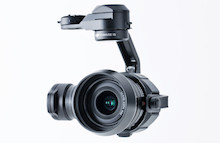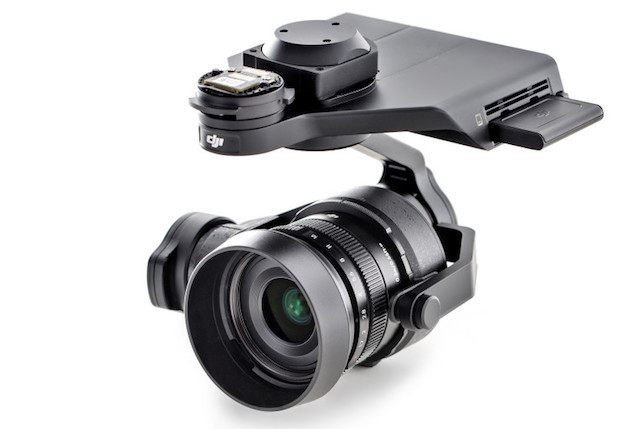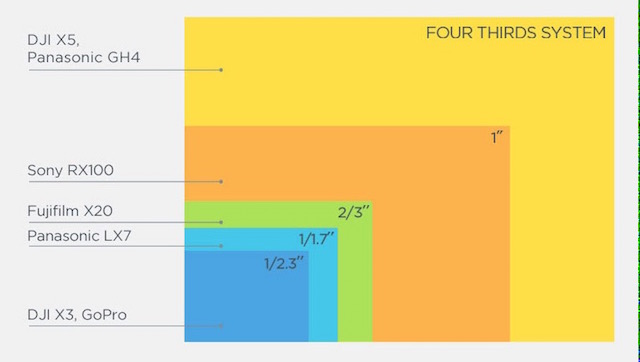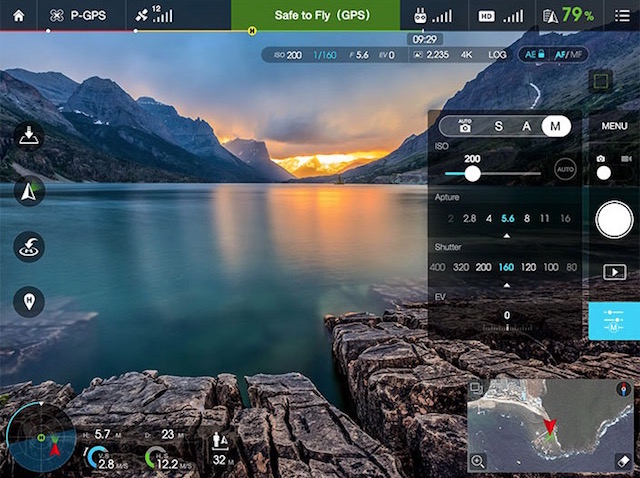DJI announces Zenmuse X5/X5R, world’s first MFT cameras designed specifically for drones
posted Friday, September 11, 2015 at 11:56 AM EDT

In February of 2015, drone manufacturer DJI announced it had joined the Micro Four Thirds standard. Today, we get a glimpse of the first products resulting from this partnership.
DJI has officially launched the Zenmuse X5 and X5R, two new cameras for DJI’s Inspire One that are the world’s first commercial Micro Four Thirds (MFT) cameras designed specifically for aerial use.
The two cameras feature the MFT same sensor, which DJI claims is capable of capturing 16-megapixel stills and 4K video at 24fps and 30fps with an impressive 13 stops of dynamic range.

At the time of launch the two cameras will support four interchangeable lenses: the DJI MFT 15mm f/1.7 ASPH, Olympus M.ZUIKO DIGITAL ED 12mm f/2.0, Panasonic Lumix 15mm G Leica DG Summilux f/1.7 ASPH, and Olympus M.Zuiko 17mm f/1.8. Both the X5 and X5R will feature wireless aperture and focus control for comparable lenses, enabling operators to make changes on-the-fly through DJI’s GO app or its proprietary Follow Focus system.

The Zenmuse X5 camera weighs in at 0.75 lbs (340 g) and connects seamlessly with DJI’s Inspire One drone via its 3-axis Zenmuse gimbal system through an included bracket. The cameras 16-megapixel sensor features an ISO range of 100–25600, a massive increase from the 100–3200 ISO range DJI’s X3 camera was capable of.

Still images are captured at up to 7 frames per second with an exposure range of 1/8000th - 8 seconds. Exposure compensation can be adjusted –3/+3 at 1/3 stop intervals and time-lapses can be shot at 3, 5, 7, 10, 20, 30 and 60 second intervals.
Video from the X5 can be shot at 4K resolution at both 24fps and 30fps, and is recorded to a MicroSD card as an H.264 MPEG4 file. Video can be shot in sRGB, Color Looks, LOG and Cine-D color spaces.

DJI’s new Zenmuse X5R camera is identical in shape and size of the X5 camera, but has a few extra tricks up its sleeve. As the ‘R’ in its name suggests, the X5R is capable of capturing CinemaDNG (RAW) video at an average bitrate of 1.7Gbps (maximum of 2.4Gbps). To further improve the resulting imagery captured by the camera, DJI has also included a new D-LOG option for extracting as much information as possible from the 4K footage.

Also different from its X5 counterpart, the Zenmuse X5R includes the option to use a removable 512GB solid state disk (SSD) on the gimbal’s mounting plate for storing footage to, in addition to the integrated MicroSD slot. This means you can either have duplicate copies of your footage or use one method as an overflow safety net for longer shoots.

DJI is also releasing CineLight, software that will let you edit and convert your RAW Cinema DNG footage from the Zenmuse X5R camera, making it easier for users to fit the camera and its footage into their current workflow.
The Zenmuse X5 is currently available for preorder on DJI’s online store for US$2,199 on its own or US$4,499 when purchased with an Inspire 1 Pro. Both options include DJI’s MFT 15mm F1.7 ASPH lens. Shipping is said to start by the end of September. If you’d prefer to go without the lens, you can pick an X5 up for US$1,700.
The Zenmuse X5R will be available later this year in similar options, although exact pricing details are still unclear.
(via Resource Magazine)